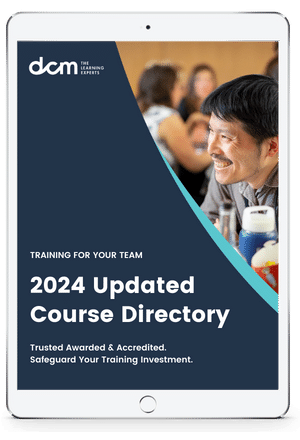One of the things that leaders are often pondering is the performance and relationships of their team. Performance indicators show that effective teams will almost always outperform people working individually, particularly in high-pressure situations or when multiple skillsets are needed.
This shouldn’t come as much of a surprise, as most organizations are recognizing the importance of team building and are trying to foster it in the workplace. However, building effective teams requires more than an abstract commitment to teamwork; it requires input from managers to foster it.
Without team-building skills, a manager risks limiting the productivity of their employees to what each member can do on their own, whereas if you foster team building you can unite your team around a common goal, which will raise productivity as a result.
So here are five steps to building a productive and effective team this year:
Step 1: Establish leadership
If your employees trust your judgement, they will work effectively even when you’re not around. Before you can start team building, you need to develop the right kind of leadership skills. This doesn’t mean asserting authority, instead try to foster trust through honesty and transparency. Especially in larger organizations, managers can’t be everywhere at once, but if your employees trust your judgements they will work effectively even when you’re not around.
Step 2: Establish relationships with each of your employees
Try to learn more about each member of your team, their skill sets, how they are motivated and their likes and dislikes. This knowledge is invaluable to leaders, as it allows them to match each employee’s expertise and competencies to specific problems, which will help increase their productivity and job satisfaction.
As well as this, try to include your employees in the decision-making process where possible. Instead of delegating tasks, give your team’s open-ended projects and allow them to determine the best solution. This will encourage them to cooperate and develop problem-solving skills.
Step 3: Build relationships between your employees
As your team starts to cooperate more, examine the way they work together and take steps to improve communication, cooperation and trust amongst the team. If there are any conflicts, try to resolve them amicably. Listen to both sides of the argument and act as a mediator. One way to do this is to brainstorm solutions, which helps to empower your employees and may lead to new solutions to the problem.
Step 4: Foster teamwork
Once you have established relations with and between your employees, it’s time to help them work together effectively. Encourage your team to share information, both amongst themselves and within the wider organisation. Also, try to communicate more with your team. This goes beyond simply holding meetings, and includes things like being open to suggestions and concerns, asking about each team member’s work and offer assistance where necessary, and doing everything you can to communicate clearly and honestly with your team.
Step 5: Set ground rules for the team
Finally, you can begin officially establishing your team by creating team values and goals, as well as evaluating team performance alongside individual performance. Be sure to include your team in this process, so they know what’s required and agree with it.
Team building is one of the most important responsibilities a manager has. It isn’t something that can be achieved in a short time and then forgotten. It is an ongoing organic process that you will have to facilitate and guide. As this process unfolds, however, your team members will begin to trust and support one another and share their skill sets and effort in order to more effectively complete your organisation’s goals.
Source: Huffington Post
People Management Reviews: Stories from Our Customers
Over the past 2 years, almost 2,000 learners (1,971 to be exact) have come to DCM to learn more about management and get certified. Read (and watch) their reviews to see how our courses have helped them achieve their career goals.
Inhouse Tailored Training for Your Team
We provide training programs that are developed by industry, for industry. Our range of programs can be delivered in a way that suits the needs of your business to offer your employees learning that is accessible and flexible.
We add value to your business by providing specialised, flexible and scalable training that meets your training needs. As your workforce grows and evolves, our globally certified and industry-validated learning solutions can assess, train and qualify your employees. For more information on how we can help please visit the in-house training page.
Membership, Stay Connected. Stay Relevant.
Completing a program is a point-in-time exercise that delivers huge value, but there is a next step to maintaining the currency of your skills in the ever-evolving professional world.
Membership is the next step.
A unique platform, membership is designed to ensure that you are in tune and up-to-date with the latest tools, trends, and developments. Being a member provides just-in-time training and continuous professional development, and an exclusive and evolving content library informed by subject matter experts and industry leaders.





_165x115_fc3.jpg)
_165x115_fc3.jpg)




